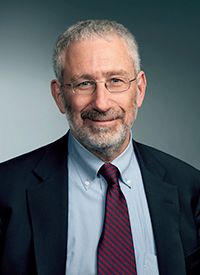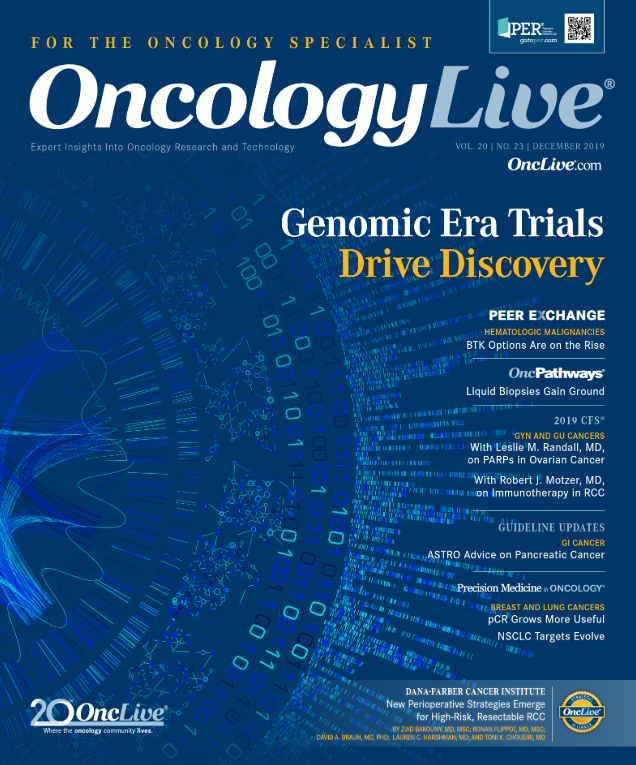A Society That Worries About Risks Should Consider Cancer Prevention
When discussing the topic of vaccination to prevent serious childhood illness, an increasing number of individuals refuse to accept the unequivocally demonstrated value of this public health strategy despite the very low risk of harm.
Maurie Markman, MD, editor in chief, is president of Medicine and Science at Cancer Treatment Centers of America and clinical professor of medicine, Drexel University College of Medicine

Maurie Markman, MD
The potential for space debris reentering the Earth to endanger humans offers some fascinating perspective on risk. Apparently, with the substantial increase in launches of satellites and other spacecraft and the demise of devices sent up over the past several decades, this “risk,” although still relatively small, is a growing concern. For example, there were 111 space launches in 2018 compared with just 66 in 2008.1
An ongoing debate between commercial companies involved in space activities and regulatory agencies involves the required efforts and associated costs of minimizing the risk to human life. One mathematical model has determined a calculated risk of injury or death on space debris reentry of less than 1 in 10,000 to be acceptable.1
Although the potential for serious harm is great, the magnitude of risk is objectively very low, and it is unlikely that many members of our society will spend any time worrying about something falling from the sky. It is even more unlikely that someone would oppose sending satellites into space based on a theoretical risk that something may return to Earth and harm them or their family or friends.
Yet, when discussing the topic of vaccination to prevent serious childhood illness (measles, pertussis, etc), an increasing number of individuals refuse to accept the unequivocally demonstrated value of this public health strategy despite the very low risk of harm. Today, measles outbreaks in a number of locations in the United States and elsewhere pose a potentially major societal health issue,2 and, where local governments have worked to increase vaccination rates, a small but vocal minority expend considerable individual and joint efforts against the public good.3
HPV Vaccination Can Make an Impact
Similarly, objective data continue to reveal the distressingly inadequate level of acceptance of human papillomavirus (HPV) vaccination in the United States despite the remarkable effectiveness and safety of this approach for cancer prevention.
Data reported by the Centers for Disease Control and Prevention (CDC) revealed that in 2018, just 51.1% of adolescents (aged 13-17) were up-to-date with HPV vaccination, with a somewhat higher percentage (68.1%) having received at least a single dose of the vaccine.4 Not surprisingly, the percentage of adolescents who had been vaccinated was greater if their parents had received a recommendation from a healthcare provider compared with individuals from families that did not get that advice.4
Fortunately, there is evidence of a population-based decrease in the risk for adolescents (both boys and girls) and young adults (both men and women) of documented HPV-related diseases despite the less-than-optimal percentage of individuals who have initiated and completed HPV vaccination.5 Even at this early date following the introduction of widespread noninvestigative HPV vaccination, there is solid evidence for a reduced risk of potential cervix cancer precursors such as cervical intraepithelial neoplasia grade 2+. One can only imagine the current and future impact of HPV vaccination on the risk of related illness with a more successful implementation strategy for this major public health initiative.
Finally, we come to the specific issue of cancer prevention resulting from HPV vaccination. A recent CDC report noted that of the 34,800 HPV-associated cancers diagnosed in the United States each year from 2012 through 2016, fully 92% “were attributable to the HPV types present in the currently available 9-valent HPV vaccine [HPV 6, 11, 16, 18, 31, 33, 45, 52, 58].”6
Consider for a moment the overwhelming impact on the prevention of cancer when we finally develop an effective approach to communicate to the public, parents, politicians, payers, and providers the remarkable value of HPV vaccination for all adolescents if initiated prior to the start of sexual activity.
Real Technological Advances
It seems appropriate to recall the poignant and highly relevant words of the late eminent clinician, investigator, administrator, and author Lewis Thomas, MD, in his truly masterful book The Lives of a Cell: Notes of a Biology Watcher.7 In the chapter titled “The Technology of Medicine,” Thomas laments what he labels halfway technology: “the kinds of things that must be done after the fact— in efforts to compensate for the incapacitating effects of certain diseases whose course one is unable to do very much about. It is a technology designed to make up for disease, or to postpone death.”7
Thomas continues: “Much of what is done in the treatment of cancer, by surgery, irradiation, and chemotherapy, represents halfway technology, in the sense that these measures are directed at the existence of already established cancer cells, but not at the mechanisms by which cells become neoplastic.”
In contrast, he describes another type of technology “that is so effective that it seems to attract the least public notice; it has come to be taken for granted.” He continues: “This is the genuinely decisive technology of modern medicine, exemplified by modern methods for immunization against diphtheria, pertussis, and the childhood virus diseases.…The point to be made about this kind of technology—the real high technology of medicine—is that it comes as the result of a genuine understanding of disease mechanisms, and when it becomes available, it is relatively inexpensive, and relatively easy to deliver.”
Although those profound words were written more than 40 years ago, they unquestionably apply to the clinical utility of HPV vaccination for preventing HPV-associated malignant disease.
References
- No one has yet been killed by re-entering space junk. The Economist. August 10, 2019. economist. com/science-and-technology/2019/08/10/no-one-has-yet-been-killed-by-re-entering-space-junk. Accessed November 6, 2019.
- Strebel PM, Orenstein WA. Measles. N Engl J Med. 2019;381(4):349-357. doi: 10.1056/NEJMcp1905181.
- Kamp J. Vaccine law targeted in potential Maine ballot question. The Wall Street Journal. September 19, 2019. wsj.com/articles/vaccine-law-targeted-in-potential-maine-ballot-question- 11568920751?mod=itp_wsj&ru=yahoo. Accessed November 7, 2019.
- Walker TY, Elam-Evans LD, Yankey D, et al. National, regional, state, and selected local area vaccination coverage among adolescents aged 13-17 years - United States, 2018. MMWR Morb Mortal Wkly Rep. 2019;68(33):718-723. doi: 10.15585/mmwr.mm6833a2.
- Drolet M, Bénard É, Pérez N, Brisson M; HPV Vaccination Impact Study Group. Population-level impact and herd effects following the introduction of human papillomavirus vaccination programmes: updated systematic review and meta-analysis. Lancet. 2019;394(10197):497-509. doi: 10.1016/S0140-6736(19)30298-3.
- Senkomago V, Henley SJ, Thomas CC, Mix JM, Markowitz LE, Saraiya M. Human papillomavirus-attributable cancers - United States, 2012-2016. MMWR Morb Mortal Wkly Rep. 2019;68(33)724-728. doi: 10.15585/mmwr.mm6833a3.
- Thomas L. The Lives of a Cell: Notes of a Biology Watcher. New York, NY: Bantam Books Inc; 1974.




